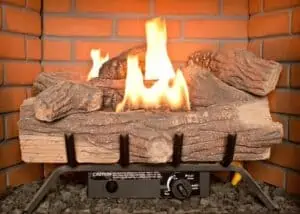How to Repair a Cracked Or Missing Fireplace Mortar Joint?
If your fireplace isn’t working properly, it’s probably because of a deteriorated mortar joint. If you want to repair a cracked or missing mortar joint, there are a few steps you can take. Follow these steps to avoid more serious problems and maintain the integrity of your chimney.
(Looking for gas wall fireplace repair? Contact us today!)

First, you’ll need to remove the old mortar. You can do this by hand or with a mortar mixer. Make sure the tools you use are clean. A wire brush can be useful to clear away debris from the brick. For more detailed cleaning, you can use a pressure washer.
Next, you’ll need to clean the ash from your flue liner. This is important because the soot on your fire brick can create a dangerous fire hazard. After you’ve cleaned your chimney, you’ll need to re-point the mortar joints. Re-pointing a chimney involves removing the old, cracked mortar and replacing it with fresh mortar.
After you’ve completed the re-pointing process, you’ll need to seal the mortar with a sealant. Sealants are used to protect the surface of a fireplace, and they can help keep it from shifting during intense fires. To ensure you’re using the best sealant, check the package instructions.
If you can’t find a sealant in the store, you can buy a special high-temperature caulk. However, this type of caulk is best suited for smaller gaps in a fireplace. Instead of using a caulk gun, you can use your finger or a linoleum knife to apply the caulk. Ensure you follow the manufacturer’s directions when cutting the caulk tip.
Finally, you’ll need to make sure that you have all of the necessary tools for repairing the fireplace. There are several key tools you can purchase from your local home improvement store. Some of these are a masonry saw, a putty knife, a refractory caulk nozzle, and a tuck-pointing trowel. These are the keys to a successful pointing job on your chimney.
You’ll also need to mix the refractory caulk and then apply it to the joints. If you’re using a caulk nozzle, cut the tip as directed by the manufacturer. Apply the caulk to the joints as closely as possible. Leave the excess to dry for a couple of days. The caulk will eventually blend into your firebrick’s black soot.
It’s important to note that re-pointing is not the best option for a cracked or missing mortar joint in a fireplace. Refractory caulk can be dangerous, and you should use a more durable mortar instead.
If your fireplace is in a good shape and you’re just looking to replace a few bricks, you can try tuckpointing. This is the method most people use when repairing a damaged or missing joint. Tuckpointing is a simple and inexpensive repair. But you should be aware that tuckpointing can damage the face of your firebricks, so you may want to invest in a new set of tuckpoints if you’re planning to re-point your chimney.

